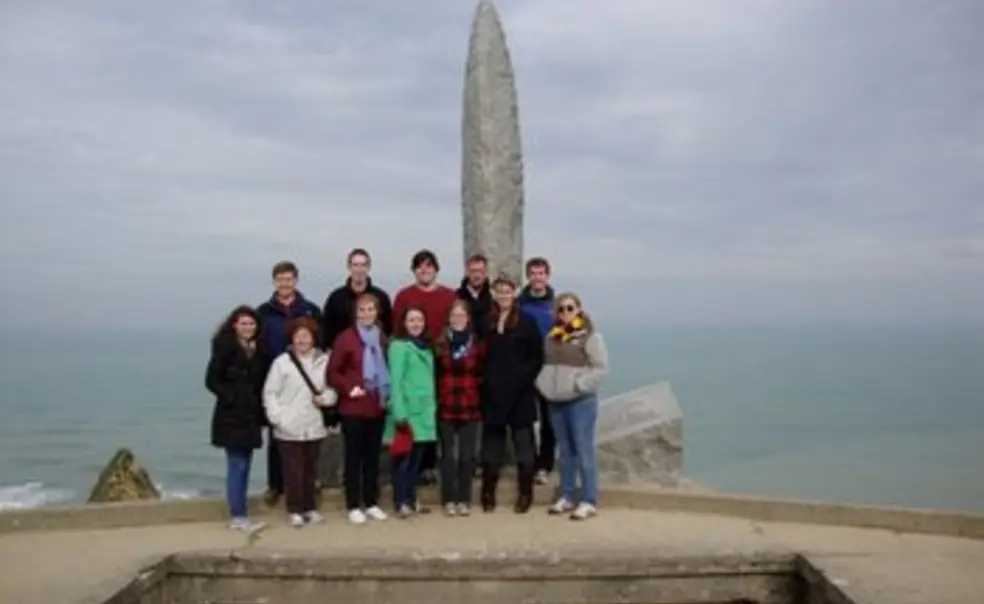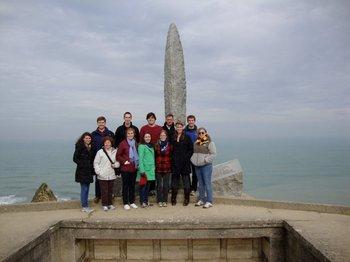History students explore the beaches of Normandy
Princeton students at the Ranger Monument on Pointe du Hoc, overlooking Omaha Beach. (Courtesy Master Sgt. Tom Jones/Princeton Army ROTC)
The group, which consisted of nine students in Professor Philip Nord’s class on the history of modern France and one ROTC cadet, spent seven days visiting military and other historical sights in Normandy and Paris with Lt. Col. John Stark and Master Sgt. Tom Jones of Princeton’s ROTC program.
Stark, the director of Army officer education and commissioning at Princeton and a lecturer in the history department, had led similar trips to Normandy while a professor at West Point and wanted to bring the experience to Princeton students.
He approached history department chair William Jordan last year about the creating the trip, and Jordan matched Stark with a history and ROTC alumnus who agreed to fund the trip. “Part of my goal was to give someone the chance to learn about one of these key turning points in history,” Stark said. He also hoped to enhance the connection between the ROTC program and the University.
[youtube https://www.youtube.com/watch?v=QbqfwnyNBFI&w=350&h=292]
Professor Nord selected the students on the basis of an application essay. Prior to the trip, each student had to research and prepare a presentation on one of the sights they would see. The group visited Utah, Omaha, and other beaches; the German, American and British cemeteries; strategic bridges and bunkers; and countless other historical sights.Stark also set up a meeting with a 91-year-old Frenchman, Andre Heinz, who had been a resistance fighter during World War II, enabling the students to hear about the war from someone who had lived through it.
Sean Wilson, a junior history major whose grandfather landed at Omaha beach on D-Day, enjoyed finally seeing the places he had learned about.
“What struck me the most, what I wasn’t prepared for, was the scale of everything,” Wilson said. “You read about it in the books how they had to take these bridges and then you go there and they are bridges over a little creek where hundreds of people fought and died. It was impossible to imagine that.”
Bailey Sperry, also a junior history major, echoed Wilson’s comments. “The American [cemetery], being right on top of the beach, there is a shock value,” she said. “You get that sense of ‘oh my goodness, so many people, so many lives were lost, and that’s only a fraction of them.’ ”
Sperry presented her research on the Merville Battery, a German fortification and set of massive guns that the Allies attacked. “The day we were there was a beautiful sunny day and these huge casements had been placed in horse pastures, so 100 yards from these guns there were two or three horses grazing in their pasture,” she remarked. “You can learn the German side, the American side, and the French side of the war, and you’re probably still not going to think about that Norman farmer whose farm was taken by the Germans.”
Stark said students seemed inspired by the trip, and he hopes future students will have the same opportunity to experience World War II history on the battlefields of France.













No responses yet